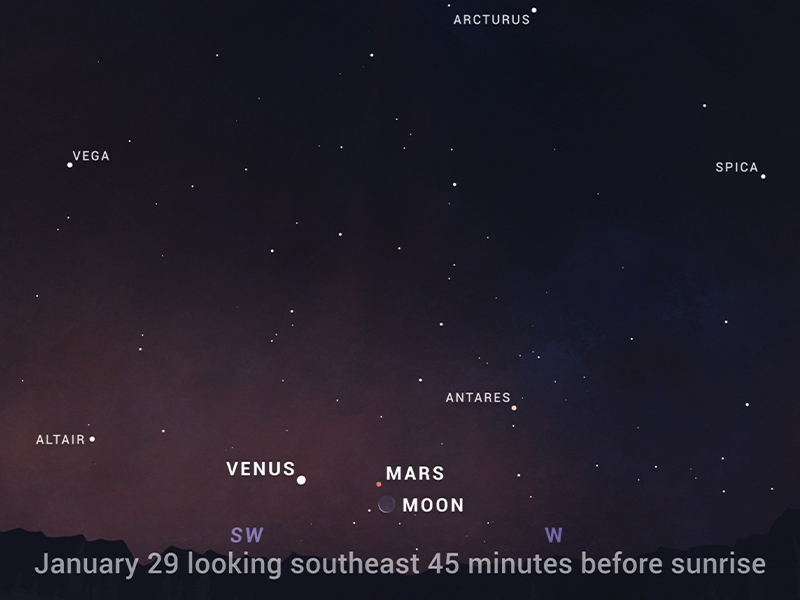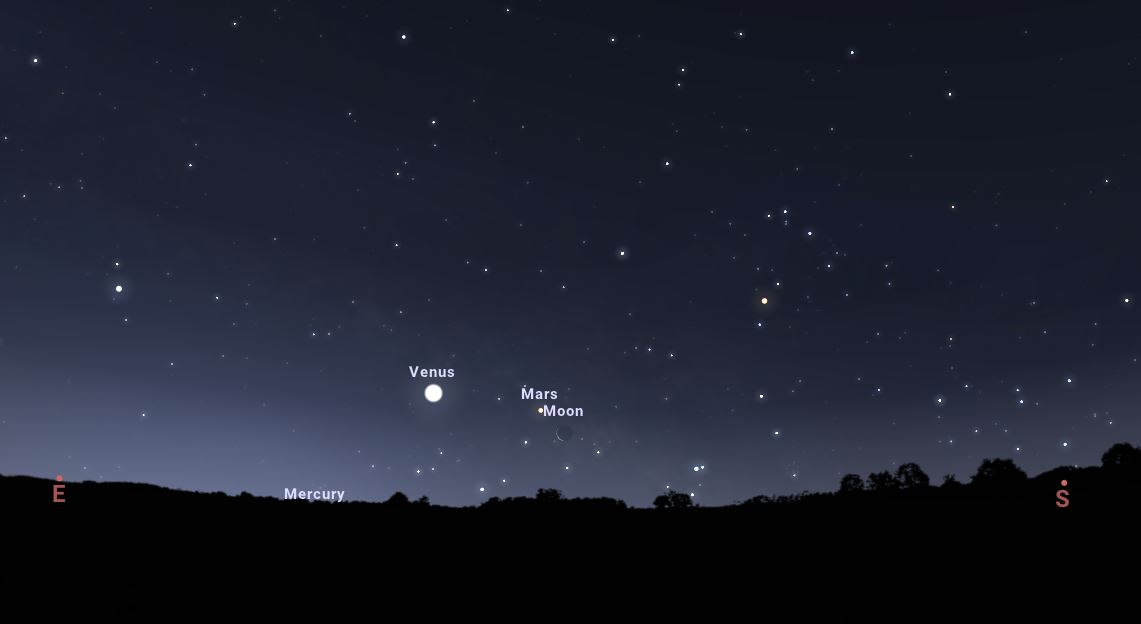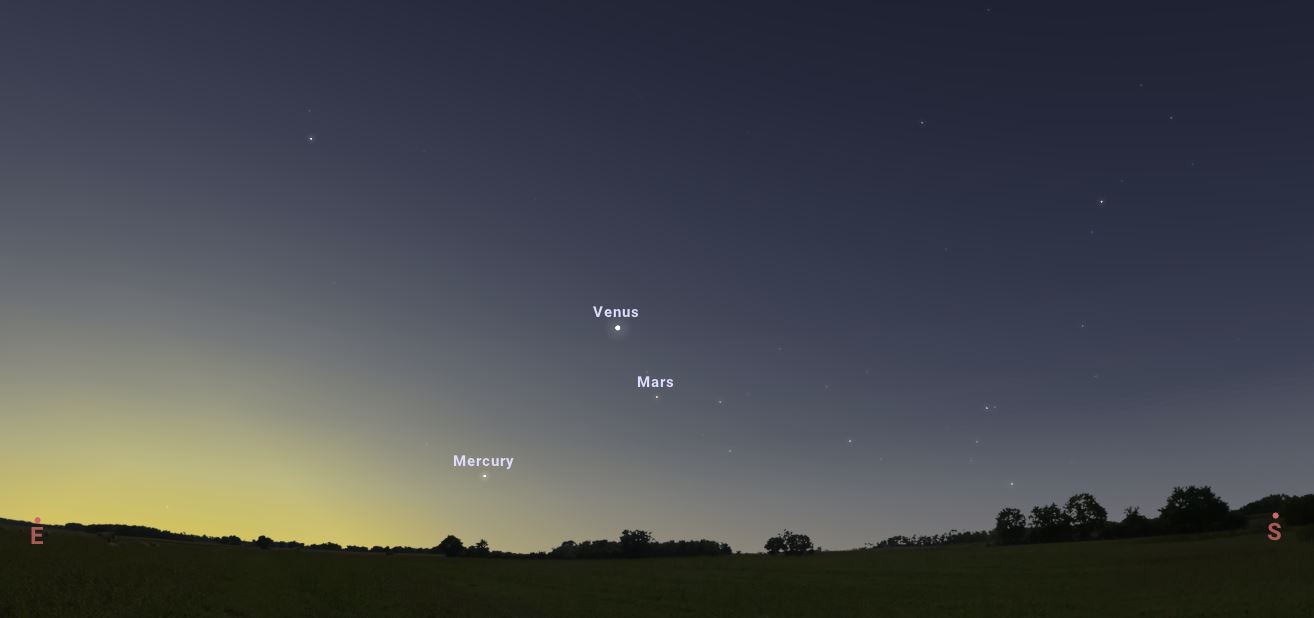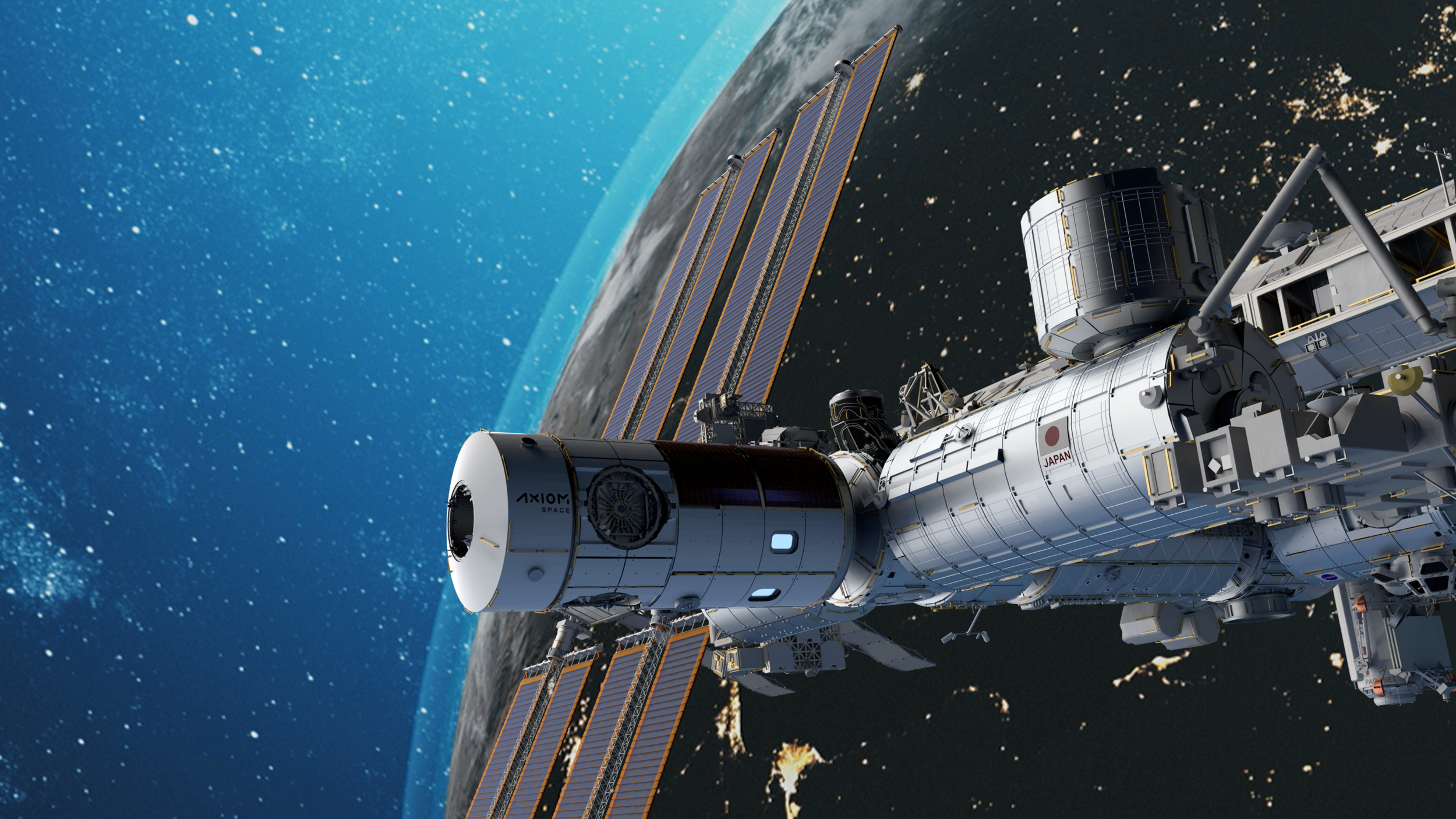What to Watch in the Night Sky: January & February
Top Stories
16 Jan 2022 2:05 PM
It's pretty cold out there — I'm not including you, Florida — but it is winter, after all. While temperatures may keep many stargazers indoors, the long nights mean extra time to find planets, constellations, or even satellites.
Since we're in a bit of a meteor shower lull this time of year (after the early January Quadrantids), it can be a good time to focus on looking for other celestial objects.
If you're in a more northerly latitude, check the Space Weather Prediction Center frequently for updates about when the aurora borealis may be active in your area.
Spotting the International Space Station is always a great activity and is easy to do thanks to this handy tool.
 The bad news: you're going to have to get up before sunrise to see this pairing of the planets and the moon.
The silver lining: sunrises are still (relatively) late in the morning.
The moon phase will be edging ever closer to new in late January, but a sliver should still be visible to make for some fantastic astrophotography of the moon and our two closest planetary neighbors, Mars and Venus.
To see them, look to the southeast in late January before sunrise where this trio will be rising. Yes, the NASA graphic above has incorrect direction labels (we'll blame an intern), but the text is correct. Another graphic (below) made with Stellarium shows the proper cardinal directions around the planets before sunrise.
The bad news: you're going to have to get up before sunrise to see this pairing of the planets and the moon.
The silver lining: sunrises are still (relatively) late in the morning.
The moon phase will be edging ever closer to new in late January, but a sliver should still be visible to make for some fantastic astrophotography of the moon and our two closest planetary neighbors, Mars and Venus.
To see them, look to the southeast in late January before sunrise where this trio will be rising. Yes, the NASA graphic above has incorrect direction labels (we'll blame an intern), but the text is correct. Another graphic (below) made with Stellarium shows the proper cardinal directions around the planets before sunrise.
 Made with Stellarium
Made with Stellarium
 Made with Stellarium
Mercury is tiny, but we can still see it with the naked eye given good conditions.
Those conditions will be here around the middle of February, just as the moon phase is full. The closest planet to the sun will reach its greatest western elongation, meaning it will be at a favorable angle relative to the earth and sun to be lit well.
As the moon sets to the west, look back toward the eastern horizon a bit before sunrise. Mercury will be following behind the bright morning star of Venus, and will be even brighter than Mars. If you have good visibility, you should be able to see all three.
Made with Stellarium
Mercury is tiny, but we can still see it with the naked eye given good conditions.
Those conditions will be here around the middle of February, just as the moon phase is full. The closest planet to the sun will reach its greatest western elongation, meaning it will be at a favorable angle relative to the earth and sun to be lit well.
As the moon sets to the west, look back toward the eastern horizon a bit before sunrise. Mercury will be following behind the bright morning star of Venus, and will be even brighter than Mars. If you have good visibility, you should be able to see all three.
 Image credit: Axiom Space
Axiom is currently in the process of building a commercial space station, but before they do, they're teaming up with NASA to send the first private astronauts on a mission to the International Space Station.
Once onboard, the Axiom astronauts are scheduled to spend eight days doing activities in coordination with the rest of the space station crew and flight controllers back on Earth.
The flight should benefit both parties as Axiom will purchase supplies and services from NASA, while NASA will pay for the return of samples from the ISS back to Earth.
The mission is scheduled to launch on February 28th from NASA's Kennedy Space Center in Florida.
Image credit: Axiom Space
Axiom is currently in the process of building a commercial space station, but before they do, they're teaming up with NASA to send the first private astronauts on a mission to the International Space Station.
Once onboard, the Axiom astronauts are scheduled to spend eight days doing activities in coordination with the rest of the space station crew and flight controllers back on Earth.
The flight should benefit both parties as Axiom will purchase supplies and services from NASA, while NASA will pay for the return of samples from the ISS back to Earth.
The mission is scheduled to launch on February 28th from NASA's Kennedy Space Center in Florida.
January 17th: Wolf Moon
The first full moon of the year occurs on January 17th and is known most commonly as the Wolf Moon or the Ice Moon. While this is not a "supermoon," the tilt of the earth will make the moon move nearly overhead in the Northern Hemisphere's midlatitudes. So, while the sun is low on the horizon, the full moon will be dominating the night sky. Check out the tool below to find out what phase the moon is in right now. Use this tool to see the current Moon phase and to plan ahead for other Moon views. Credit: NASAJanuary 29th: The Moon and Two Inner Planets
 The bad news: you're going to have to get up before sunrise to see this pairing of the planets and the moon.
The silver lining: sunrises are still (relatively) late in the morning.
The moon phase will be edging ever closer to new in late January, but a sliver should still be visible to make for some fantastic astrophotography of the moon and our two closest planetary neighbors, Mars and Venus.
To see them, look to the southeast in late January before sunrise where this trio will be rising. Yes, the NASA graphic above has incorrect direction labels (we'll blame an intern), but the text is correct. Another graphic (below) made with Stellarium shows the proper cardinal directions around the planets before sunrise.
The bad news: you're going to have to get up before sunrise to see this pairing of the planets and the moon.
The silver lining: sunrises are still (relatively) late in the morning.
The moon phase will be edging ever closer to new in late January, but a sliver should still be visible to make for some fantastic astrophotography of the moon and our two closest planetary neighbors, Mars and Venus.
To see them, look to the southeast in late January before sunrise where this trio will be rising. Yes, the NASA graphic above has incorrect direction labels (we'll blame an intern), but the text is correct. Another graphic (below) made with Stellarium shows the proper cardinal directions around the planets before sunrise.
 Made with Stellarium
Made with Stellarium
February 16th: Full Snow Moon
Sometimes it may be a bit of a mystery to determine where the names for the full moons originate. This is not one of those months. The February full moon is named accordingly for the copious amounts of snow that typically fall across the lower 48 during the second month of the year. Other names include the Eagle Moon and the Hungry Moon.February 16th: Mercury at Greatest Western Elongation
 Made with Stellarium
Mercury is tiny, but we can still see it with the naked eye given good conditions.
Those conditions will be here around the middle of February, just as the moon phase is full. The closest planet to the sun will reach its greatest western elongation, meaning it will be at a favorable angle relative to the earth and sun to be lit well.
As the moon sets to the west, look back toward the eastern horizon a bit before sunrise. Mercury will be following behind the bright morning star of Venus, and will be even brighter than Mars. If you have good visibility, you should be able to see all three.
Made with Stellarium
Mercury is tiny, but we can still see it with the naked eye given good conditions.
Those conditions will be here around the middle of February, just as the moon phase is full. The closest planet to the sun will reach its greatest western elongation, meaning it will be at a favorable angle relative to the earth and sun to be lit well.
As the moon sets to the west, look back toward the eastern horizon a bit before sunrise. Mercury will be following behind the bright morning star of Venus, and will be even brighter than Mars. If you have good visibility, you should be able to see all three.
February 28th: Axiom-1 Mission to the ISS
 Image credit: Axiom Space
Axiom is currently in the process of building a commercial space station, but before they do, they're teaming up with NASA to send the first private astronauts on a mission to the International Space Station.
Once onboard, the Axiom astronauts are scheduled to spend eight days doing activities in coordination with the rest of the space station crew and flight controllers back on Earth.
The flight should benefit both parties as Axiom will purchase supplies and services from NASA, while NASA will pay for the return of samples from the ISS back to Earth.
The mission is scheduled to launch on February 28th from NASA's Kennedy Space Center in Florida.
Image credit: Axiom Space
Axiom is currently in the process of building a commercial space station, but before they do, they're teaming up with NASA to send the first private astronauts on a mission to the International Space Station.
Once onboard, the Axiom astronauts are scheduled to spend eight days doing activities in coordination with the rest of the space station crew and flight controllers back on Earth.
The flight should benefit both parties as Axiom will purchase supplies and services from NASA, while NASA will pay for the return of samples from the ISS back to Earth.
The mission is scheduled to launch on February 28th from NASA's Kennedy Space Center in Florida.All Weather News
More